From Kokand, we travelled to Margilan for an overnight stay. Margilan is famous for its silk industry and several silk workshops are open to visitors.
Here are some of the silk workshops we visited and other attractions in Margilan.
About the town of Margilan
Margilan is located in the Fergana Valley in eastern Uzbekistan. It has a population of approximately 200,000. It is known to have existed since around the 9th century as a caravan route on the Silk Road.
It is home to the largest silk factory in Uzbekistan, producing high-quality silk products. Some of these workshops are open to visitors. We visited two of the workshops. Other attractions in the city of Margilan are also mentioned in this post.
About Margilan Silk
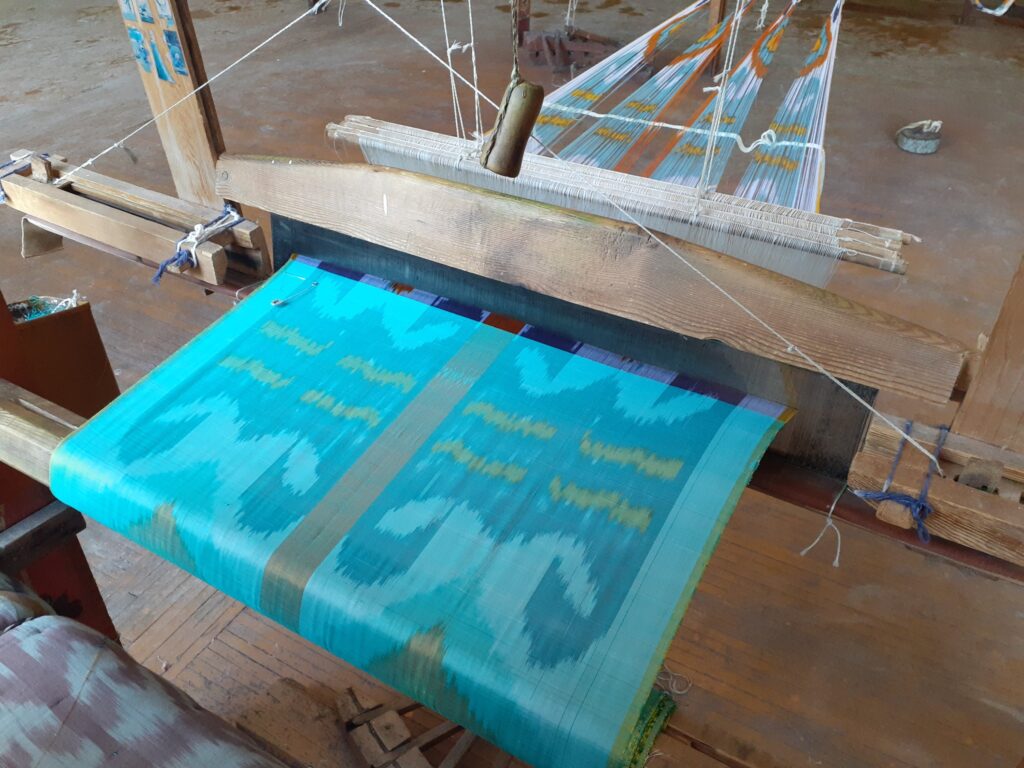
Margilan originally prospered as a transit point on the Silk Road. However, influential people in the Fergana Basin were keen to acquire Chinese silk weaving techniques. In the process, artisans who learnt their own techniques raised Margilan silk to world-class quality.
The silk industry in the region has a long history: it is known that silk yarn was processed in the ancient Sogd state on the territory of Uzbekistan in the 1st and 2nd centuries AD, and silk fabric was produced in the 5th and 6th centuries.
In Margilan, silk weaving is used in the form of 100% silk, as well as a mixture of silk and cotton yarns (silk in the warp and cotton in the weft). Ikat refers to weaving, where the pattern is created by weaving dyed yarns, rather than weaving the fabric and then colouring or printing it (batik). Common traditional patterns include eagles and sheep’s horns.
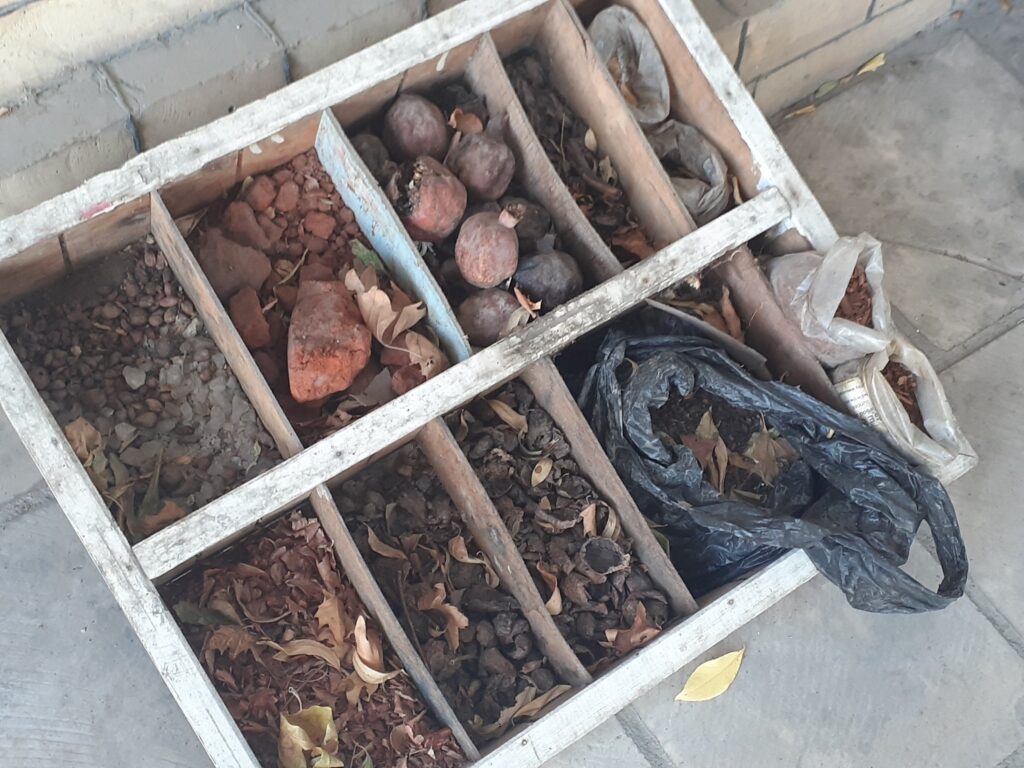
Natural materials are used for dyeing. Margilan silk is produced in a total of 40 processes, starting with the extraction of silk fibres from silkworms and the twisting of the threads. The finished smooth, lustrous silk is then exported all over the world.
Yodgorlik Silk Factory
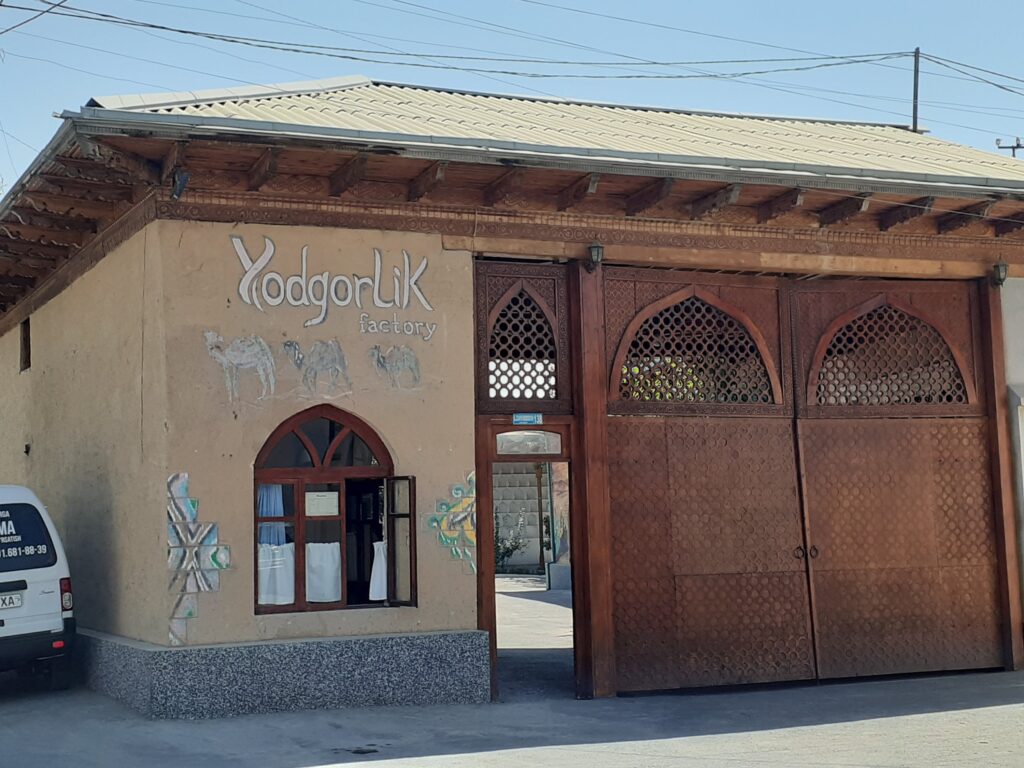
This silk factory was established in 1972. Visitors can see the entire process for an entrance fee of 30,000 som. Unfortunately, when we visited, part of the workshop was under renovation and we could not see all the processes. Instead, the entrance fee was discounted to 20,000 som.
We visited without a reservation, but an English-speaking guide was available to show us around the factory.

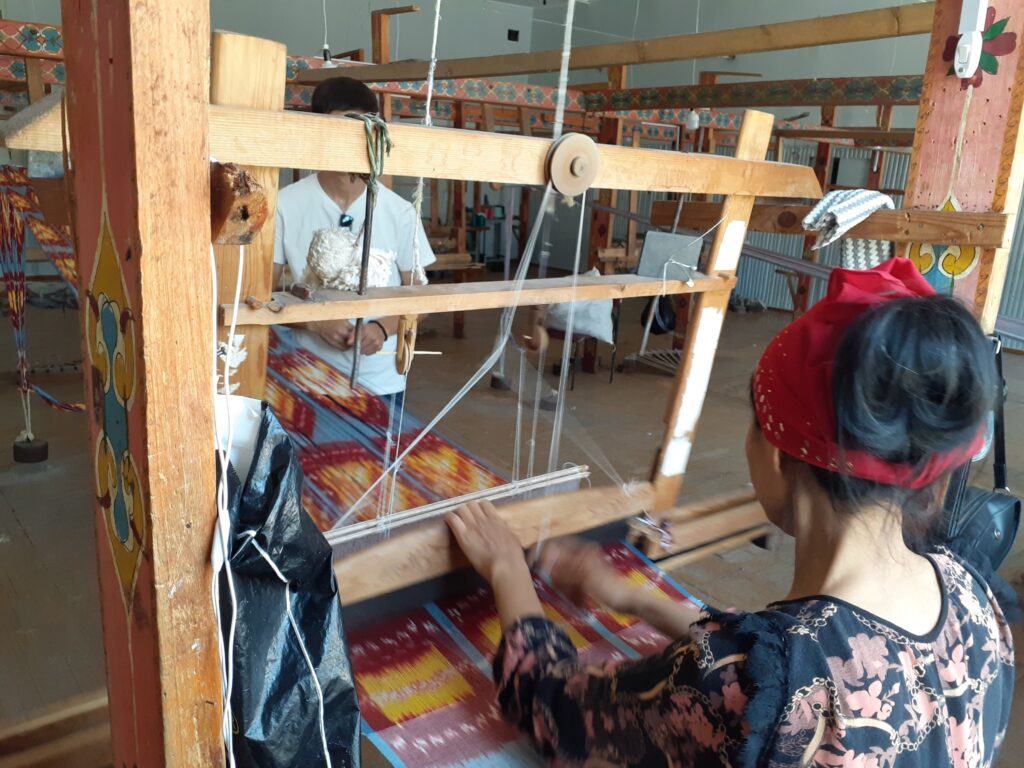
The factory uses Russian and German machines as well as traditional looms. The hand weavers can weave only 5 metres a day. Russian looms can produce 20 metres of fabric per day and former East German looms can produce 30 metres per day.
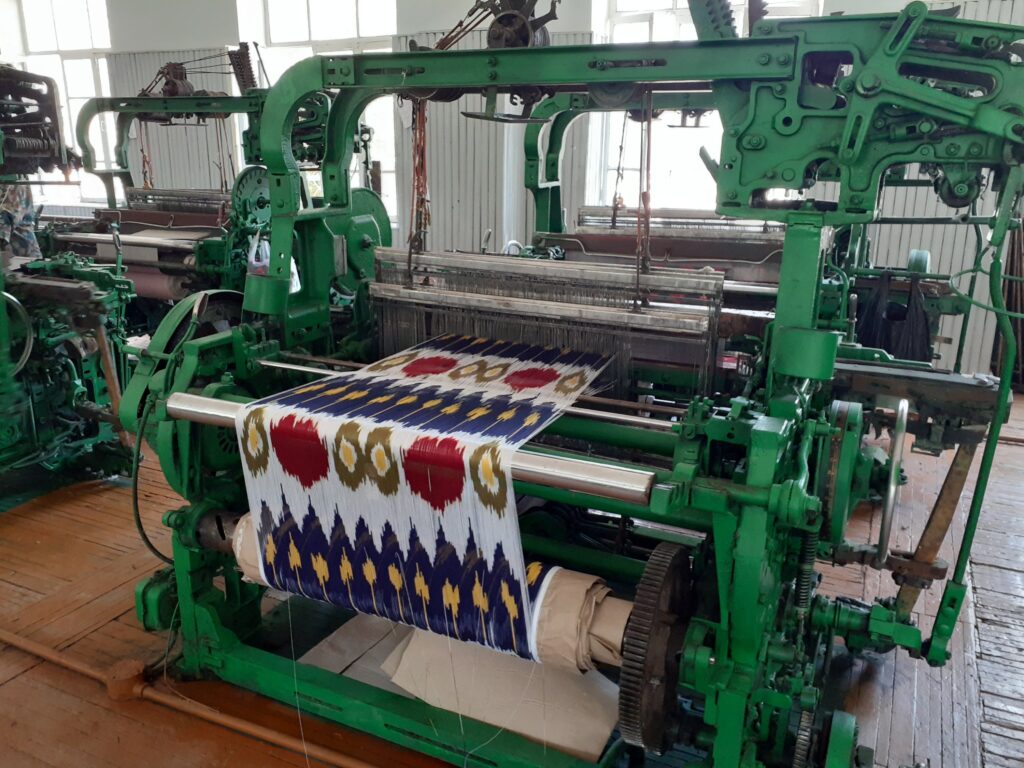
Said Ahmadxo’ja madrasasi
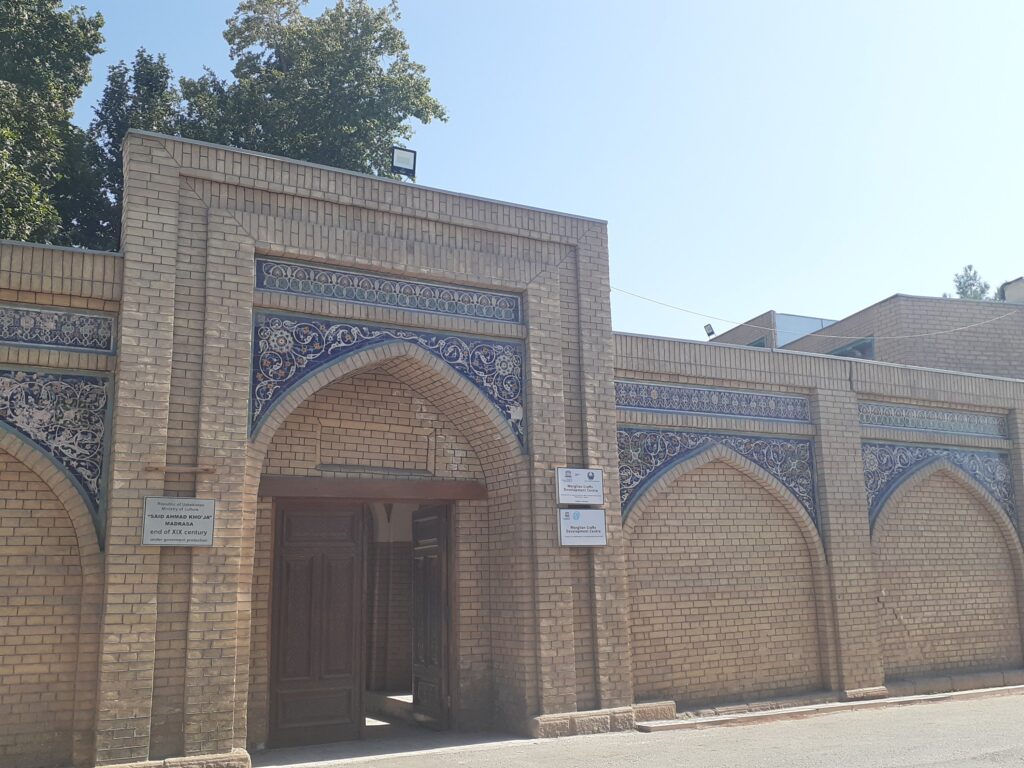
This madrasa was built between 1907 and 1909 and was renovated in 2007 in connection with the 2000th anniversary of the founding of Margilan. When President Karimov visited here in September of the same year, the ‘National Crafts Centre’ was opened. Currently, the families of the famous masters of Margilon silk weaving operate workshops in the madrasa.
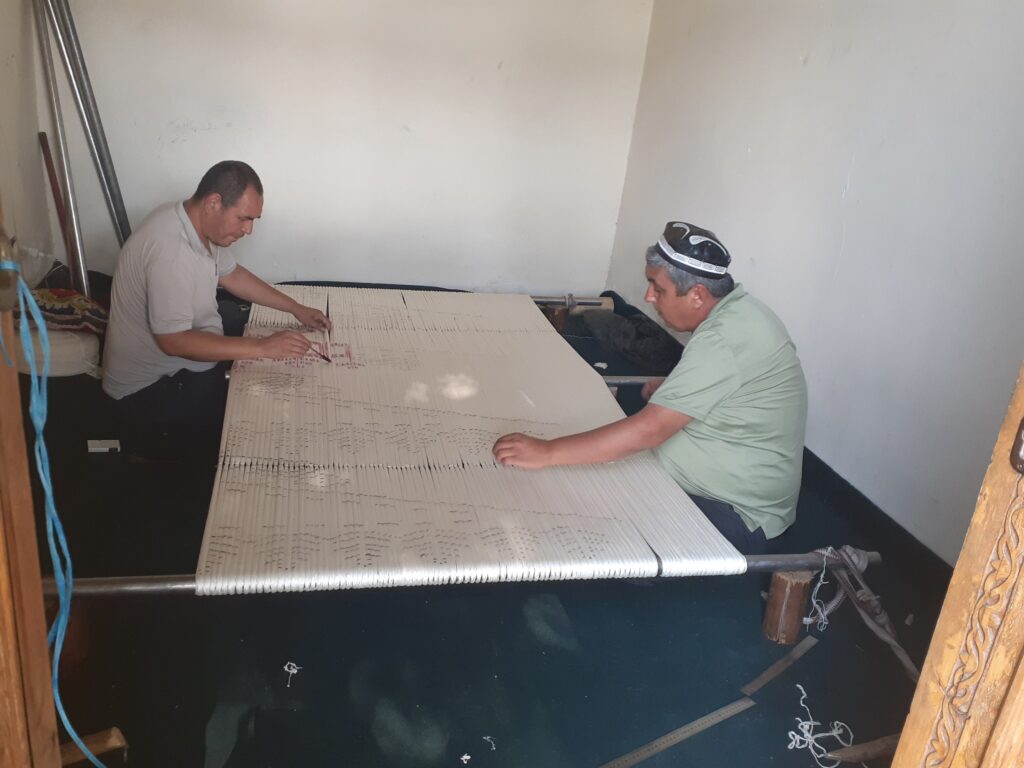
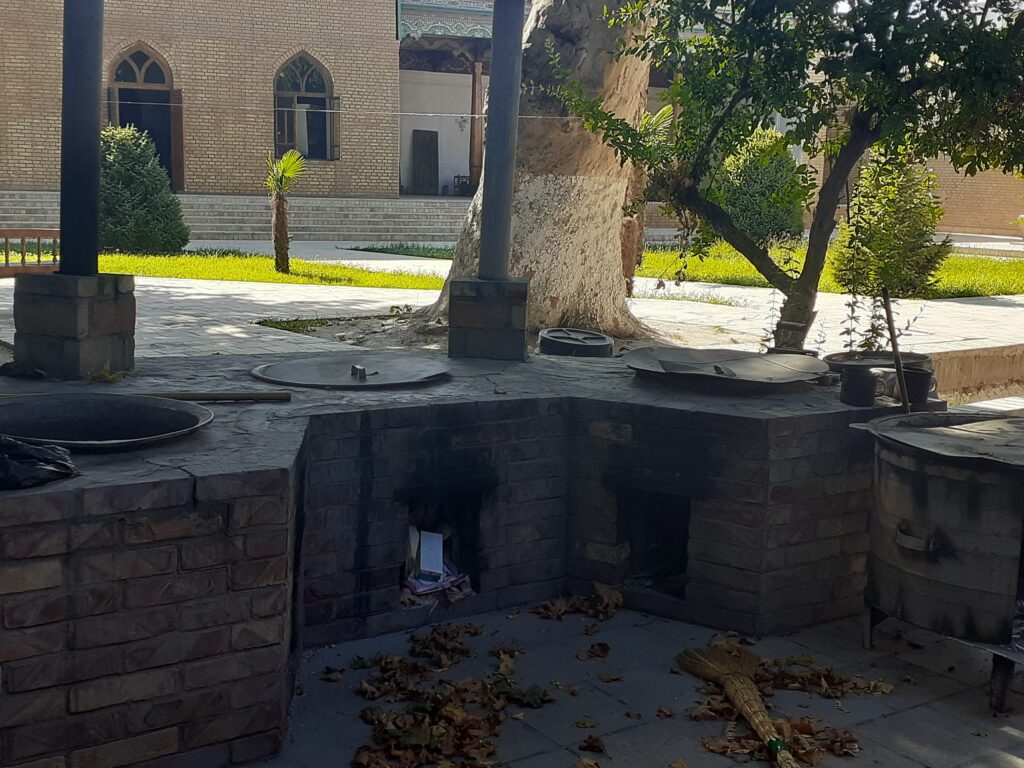

Free admission. We visited without an appointment, but the Russian-speaking owner gave us a tour of the workshop. Here we could actually see artisans with more decades of experience at work. There is also a gift shop where you can buy their work.
Khonakhan Mosque

This mosque was built in the 16th century and has been renovated in stages since 2000. When we visited, there were only some old bricks in the semi-basement area and almost everything else was in a new state. The contrasting green and white design of the façade is beautiful.
Mavzoley Pirsiddik

Built in the 18th century. It is a complex of several buildings on the site. Behind the mosque is an old cemetery. There is a north-facing mausoleum in the courtyard, where Saint Pirsiddik is said to be buried.
Legend has it that when Saint Pir Siddiq was hiding in the cave to escape the infidels, he was protected from pursuers because pigeons had built a brick nest at the entrance. The site is therefore home to a large number of pigeons.
Margilan Museum

The museum is situated at the intersection where the market is located. It is surrounded by small shops and a café in front of the fountain. It is a lively place where many people gather.
Accommodation in Margilan
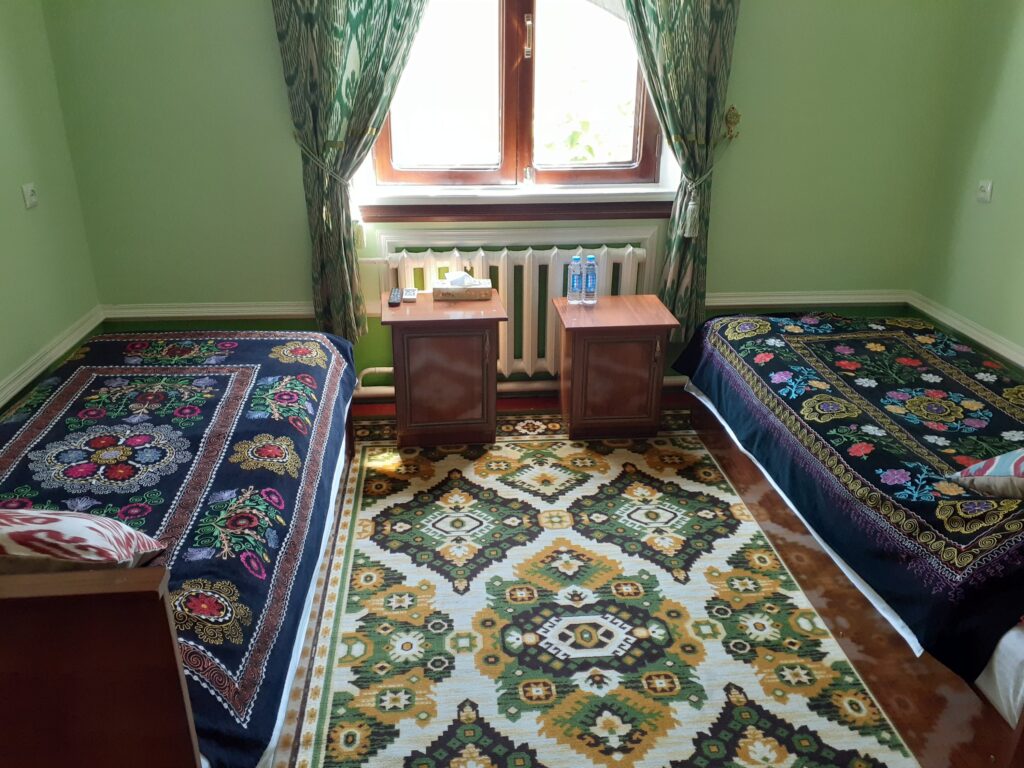
We stayed at the Ikathouse in Margilan. The ikat is beautifully arranged throughout the house and the shared space is large. The room creations were nice and stylish, but the man on the front desk was somewhat unfriendly.
The walk-in rate is USD 45 for a double room and USD 35 for a twin room. Breakfast and registration fee included, but twin rooms are only available on the ground floor. We negotiated and got a twin room for 350,000 som (about USD 30).
Meals in Margilan

We had a nice dinner at O’zbekona oshxonasi. The minced lamb skewers (keema) were the cheapest we have eaten in Uzbekistan, at 10,000 som per skewer. Juicy and very tasty!
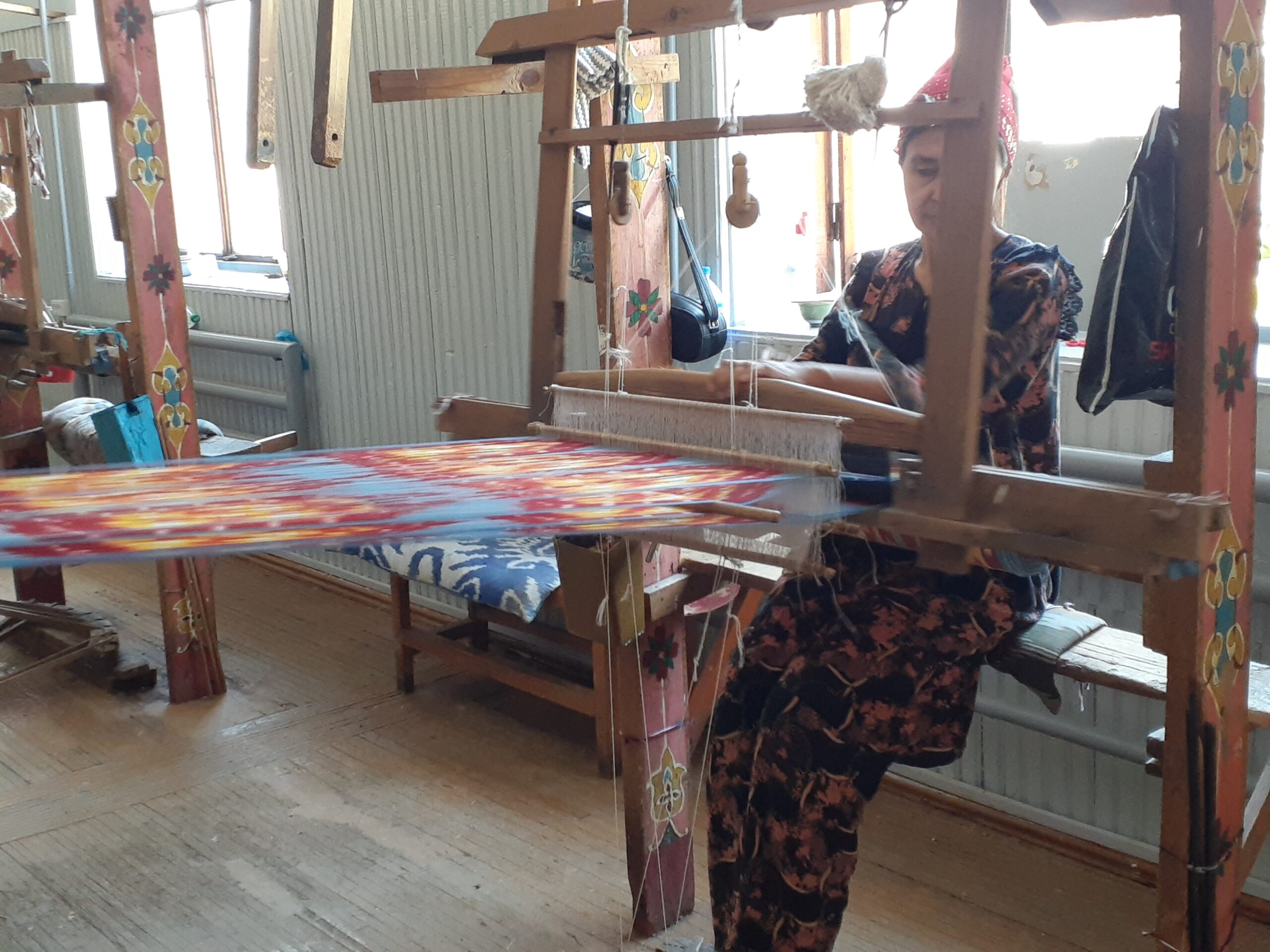


Comment